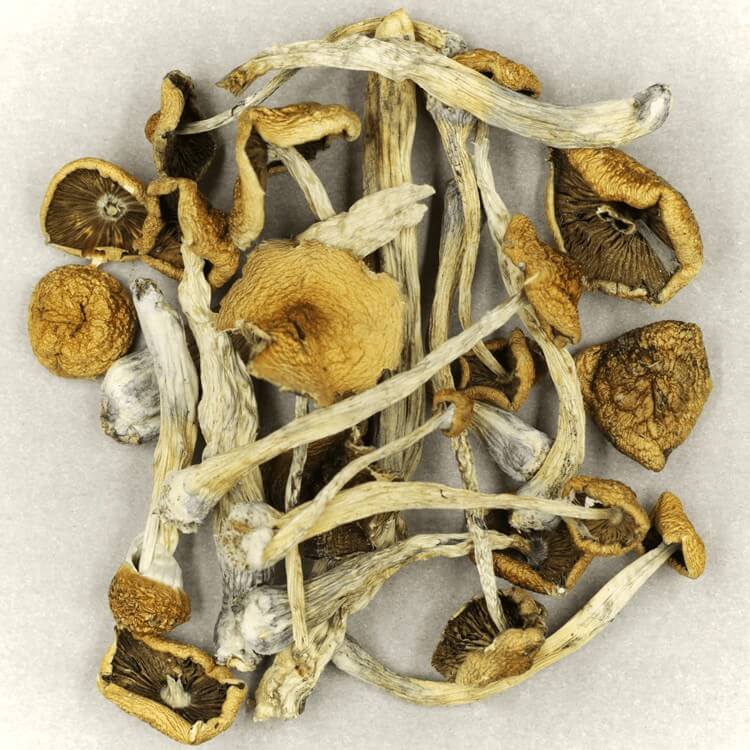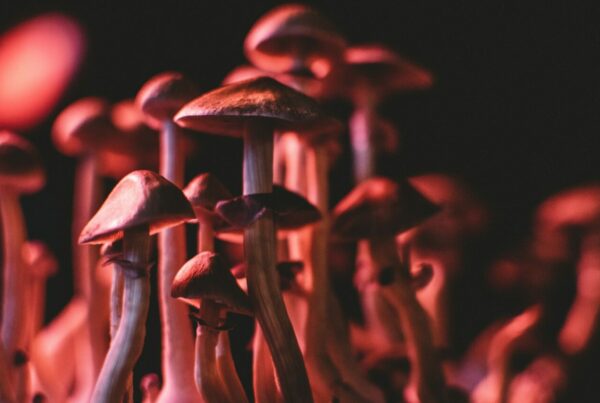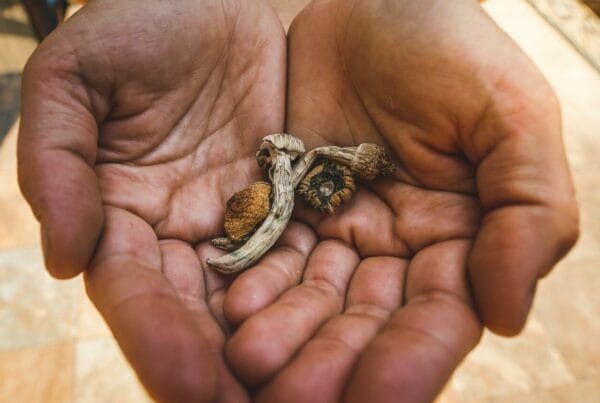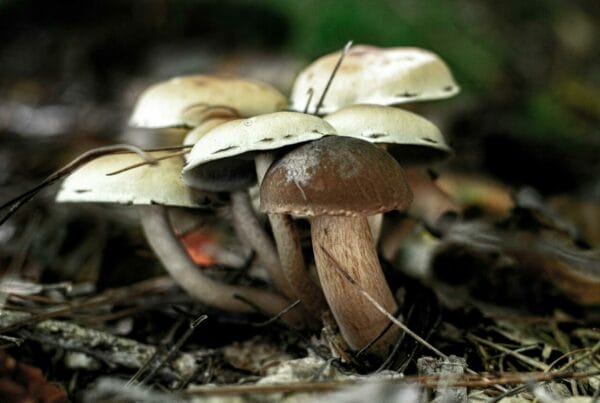The strength of Psilocybe mexicana was once thought to be mythic, but a shift in this perception has occurred due to ongoing psilocybin research. The psychedelic research community is consistently uncovering its therapeutic advantages, which is slowly but surely leading to its recognition in the medical sector. Experts view this emerging field as promising and persistently work to define safe dosage guidelines for medicinal usage.
Key Takeaways
- Researchers utilize cutting-edge techniques like liquid chromatography in conjunction with tandem mass spectrometry to measure mushroom potency.
- Psilocybe Mexicana, among other mushroom varieties, is undergoing clinical trials to evaluate its potential healing properties.
- Genetic variation in magic mushrooms is critical for creating a precise dosage guide.
Psychedelic Mushrooms: From Mystery to Scientific Discoveries
In the past, only a small number of conditions were known to be alleviated by Psilocybe Cubensis. However, psilocybin is presently making substantial progress in revealing its concealed medicinal traits.
Experts are exploring the potential of Psilocybe Mexicana and other potent strains in extensive research and clinical trials. Whether the studies involve in vivo or in vitro subjects, this strain proves effective in showcasing the genuine effects and benefits of the fungus species.
Psychedelics Breaking into the Market
Once concealed, now in the spotlight—ongoing scientific breakthroughs are continually capturing public attention, particularly among those seeking therapeutic remedies. Conventional mental health treatments often fail to meet the mark, pushing individuals to look for more trustworthy alternatives.
Welcome, magic mushrooms.
Patients dealing with mental health disorders are resorting to psilocybin, which has demonstrated potential in treating conditions such as depression, alcohol dependency, anxiety, compulsions, tics, chronic pain, and more.
Currently, medical professionals are discovering innovative ways to accurately determine the optimal dosage for safe patient administration. A research team from the University of Texas has notably created a model for extracting psilocybin and psilocin concentrations.
Establishing the clinical potency of magic mushrooms is achievable.
The Distinctive Features of Mexicana
Researchers have conducted extensive studies on Golden Teachers, Blue Meanies, and B-Plus. However, to enhance our comprehension of safe magic mushroom use, it’s essential to investigate other species as well.
The Mexicana species is now a favored subject for research. This is not just because it’s among the most ancient species, but also because its relatively lower potency makes it a potential match for medical drug standards.
Despite its less potent nature compared to other species, the Mexican strain can still produce effects similar to mainstream strains. As the trend of microdosing gains traction among patients, this strain becomes an increasingly appealing option.
This strain exhibits consistent levels of psilocybin and psilocin, akin to other strains. So, what makes it stand out among its peers? The answer lies in its historical and anthropological significance.
Delving Into a Vibrant “Mexican” History
In the past, psilocybe mexicana naturally flourished in moss. Indigenous populations deeply respected these psilocybin mushrooms, often associating them with mystical or supernatural occurrences.
Let’s focus on Mexican mushrooms. The earliest recorded use of these mushrooms dates back over 2000 years by the native populations of North and Central America. The Aztecs, an ancient civilization, referred to these mushrooms as the “food of the Gods,” or “teonanácatl” in their language.
If Aztecs were present today, they would vouch for the transformative, emotionally profound, and mentally grounding effects of the Mexicana, even though they might not comprehend these modern terms.
Regardless of various cultivation techniques, this mushroom has managed to retain its natural psilocybin concentrations, showcasing its authenticity. This authenticity is a widely recognized standard that both researchers and psychedelic research institutions highly appreciate.
Innovative Strategies for Testing Psilocybin Content and Potency
A team of ten researchers from the University of Texas at Arlington and other research institutions have devised a novel method for testing the potency of psychoactive compounds in mushrooms. This innovative measurement approach combines liquid chromatography and tandem mass spectrometry.
Below are two groundbreaking techniques:
- Liquid chromatography is a technique that divides and examines chemical mixtures, particularly active chemicals in mushrooms in this context. This procedure requires the passage of a liquid sample through a column filled with a solid substance (the stationary phase). The interaction of various chemicals in the sample with the stationary and mobile phases leads to their separation at different speeds as they traverse the column.
- Spectrometry is typically used to investigate the interaction between matter and electromagnetic radiation across a range of wavelengths. It pinpoints and quantifies substances by the unique wavelengths of light that molecules absorb and scatter. This enables the assessment of the electronic, vibrational, and rotational states of the chemical.
This method was utilized on five varieties of magic mushrooms. The researchers found that the average total psilocybin and psilocin levels across these strains varied between 0.879 and 1.36. These concentrations were higher than several other strains, including Bull Run and Cambodian. They confirmed the precision of their study by comparing their findings with those of other independent laboratories.
The alignment of results from both labs further validated the reliability of their testing sequence to accurately assess the potency of the mushrooms.
If supported by specialists, this could pave the way for new approaches to existing psychedelic strength testing techniques, acting as an extra safety check to avoid incorrect dosage estimations.
Expanding Research to Include Other Species
Research expansion to include other species is advantageous. It will enhance our knowledge of the potential health benefits of different strains and establish foundational data on the effects of less potent mushrooms.
Furthermore, it can help educate individuals about the effects of different dosages on the psychedelic experience. Through a comparison of Mexicans with more potent strains like Psilocybe Cubensis, researchers can identify how the variation in active compound concentrations can affect therapeutic results.
For example, the Blue Meanies strain produces stronger hallucinogenic effects, which could potentially be useful in treating conditions such as depression. Conversely, lower doses might be more suitable for microdosing or more subtle applications like enhancing mood or improving focus.
Variety in Genetics Facilitates Safer Treatments
It’s less known that different cultivars or varieties have distinct genetic profiles and
Differences in potency, chemical composition, and effects are characteristic of hallucinogenic mushrooms. Medical experts can leverage these differences to select the most suitable type for specific medical purposes and adjust doses to individuals’ unique needs. This approach maximizes benefits while minimizing potential risks.
Take, for instance, Psilocybe Semilanceata (Liberty Caps) or Psilocybe cyanescens. Both have unique alkaloid content, potentially effective for anxiety treatment. On the other hand, other synthetically bred mushrooms may be more appropriate for addressing substance abuse or compulsive behaviors. This versatility enables the development of tailored treatments that are both safer and more effective.
From this, it can be inferred that the genetic diversity of hallucinogenic mushrooms, coupled with advances in potency assessment and identification techniques, is key to creating safer medical treatments.
Enhanced Safety in Medical Applications
Let’s consider the potential implications of safer dosage practices.
- Decreased risk of overdose: Accurate dosing eliminates concerns about overdosing. This also means product labels need to be more explicit to avoid misinterpretation by consumers.
- Better predictability: With precise dosing, users can better predict the effects or experiences they might encounter during their psychedelic experiences. This can alleviate overwhelming sensations and anxiety, leading to greater user satisfaction.
- Standardized measurement: Consistent dosing accuracy can lead to a standard measurement system, enabling people to refer to charts for possible effects.
Experience the Benefits of Accurate Dosing with Our Advanced Potency Tests | Buy Magic Mushrooms Online at Magic Mushrooms Ottawa Canada
With the continued development of these advanced techniques, unpredictable effects will be a thing of the past. Combine this with smart online shopping at Magic Mushrooms Ottawa Canada, where we offer dried mushrooms for a tranquil, soothing psychedelic experience without excessive psychoactivity. Buy psychedelics online in Canada through Magic Mushrooms Ottawa Canada.
Frequently Asked Questions
Are Big Mexicans and Psilocybe Cubensis the same?
No, Psilocybe Cubensis and Big Mexicans are distinct mushroom strains, so it’s essential not to confuse them. Big Mexicans exhibit a higher compound concentration, ranging between 0.5% to 1%, which makes them considerably more potent.
Psilocybe Mexicana mushrooms are less potent compared to Psilocybe Cubensis. It’s important to note that they also have different physical characteristics: Psilocybe Mexicana usually has a bell-like cap, while Psilocybe Cubensis tends to have a more conical shape.
What is the peak concentration of psilocybin in Mexican mushrooms?
The maximum concentrations of psilocybin and psilocin in Mexican mushrooms can reach up to 0.25%. While these levels are relatively low, similar to the Golden Teacher strain, they are still capable of inducing profound psychedelic experiences that may have potential health benefits.
What is the recommended safe dosage for medical use?
Usually, a dosage ranging from 1 to 2 grams is recommended. However, this can vary based on factors such as the method of consumption, individual metabolic rate, and the particular strain’s potency. Some individuals opt to take sub-threshold doses from 0.05 (50mg) to 0.025 grams (250mg) to mitigate the hallucinogenic effects.





